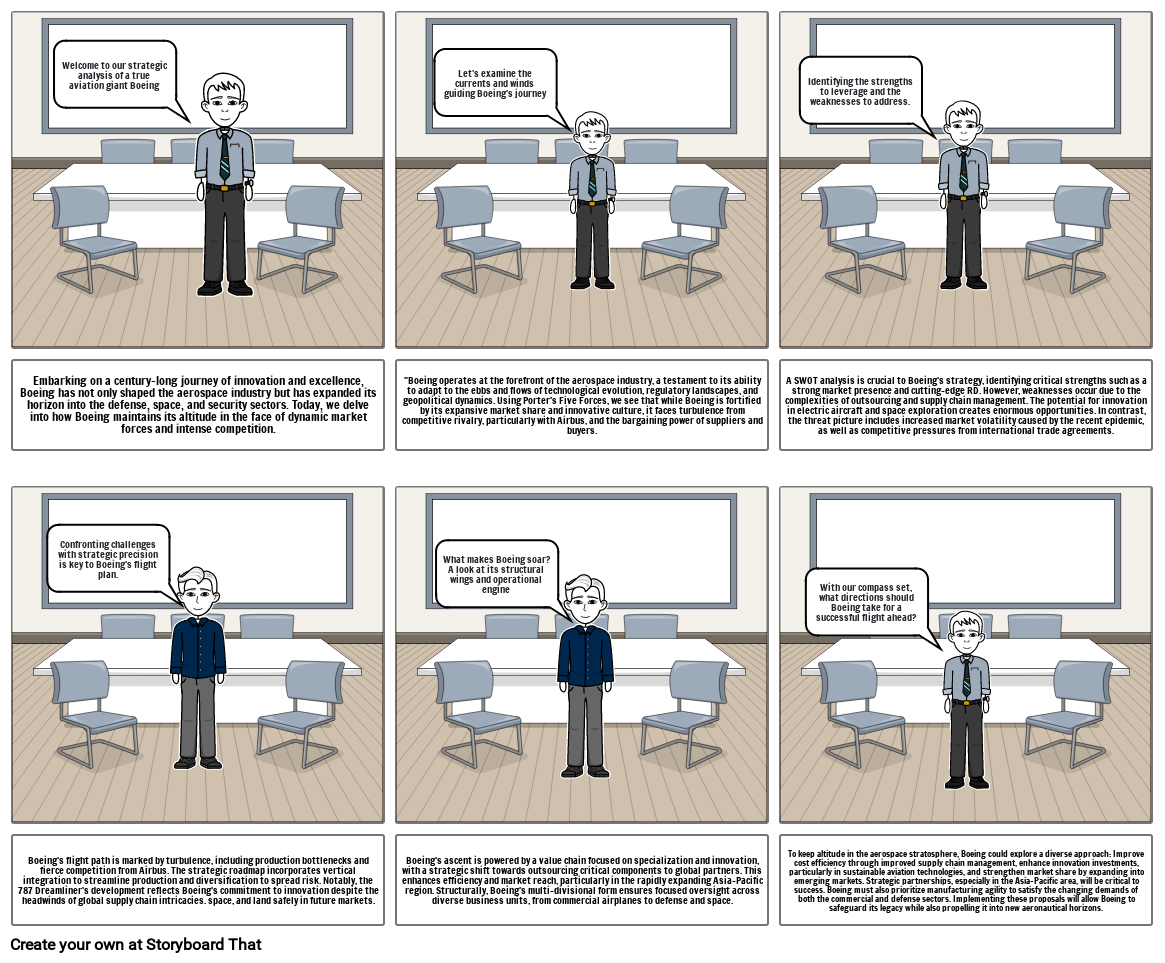Business Case Analysis of Boeing

Storyboard Text
- Today, we embark on a retrospective adventure, exploring how Boeing has shaped a century of aerospace excellence and innovation
- My ball went into the bushes and popped. I need to get a new one.
- This is where the soccer balls are made in the factory.
- My mom dropped me off after my practice so I could get a new ball.
- Welcome to the local town sports store!!
- Buy one soccer ball, get any other soccer item 50% off!Only at The Local Town Sports Store
- Form Utility - Changing raw materials or putting parts together to make them more useful. Examples: plastic, rubber
- Place Utility - The place where a person can buy the product. Examples: Sports stores, Modell's Sporting Goods
- Possession Utility - The exchange of a product for some monetary value. Examples: Credit cards, gift cards, cash, coupons.
- Information Utility - Communication with the consumer about your product or service. Making people aware your product or service exists. Examples: Advertisements, flyers, billboards
Over 30 Million Storyboards Created
No Downloads, No Credit Card, and No Login Needed to Try!
